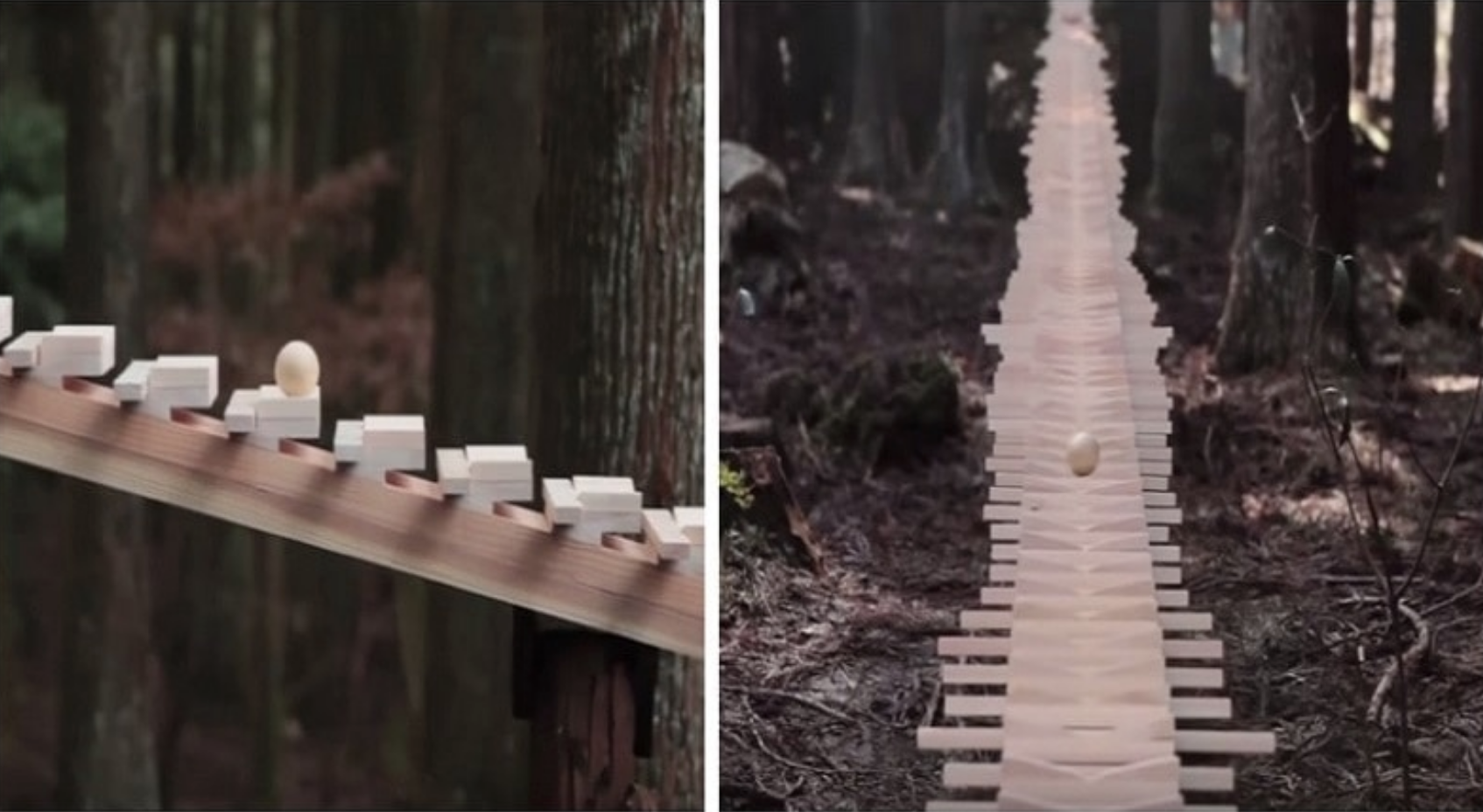Music
This Giant Mile-Long Forest Xylophone Plays Bach When You Roll A Ball Down It
With the help of carpenters and sound engineers, a giant xylophone was built in the forest, raised off the ground by pillars.

(TMU) – If, about six years ago, you perhaps have found yourself exploring the Hokkaido forest, located on the second largest island of Japan’s northernmost prefecture, you may have come across a giant xylophone in the middle of the forest.
If so, hopefully you also found a wooden ball and released it on a journey down on this amazing, mile-long musical instrument.
You may well have thought you were dreaming when the instrument played Bach’s Cantata 147.
It’s the brainchild of Morihiro Harano, then creative director Drill Inc. The giant xylophone was built in 2011 to film, in action, as part of an ad campaign for Japanese telecom NTT DoCoMo’s launch of their wood encased, kidney shaped, Touch Wood SH-08C device.
Harano, with the help of Carpenter/Wood Engineer Mitsuo Tsuda, sound engineer Kenjiro Matsuo, and a team of carpenters, the giant xylophone was built in the forest, raised off the ground by pillars.
Although intricate, the instrument retains its simplicity, with a small wooden ball traveling down a line of small wooden plates, using natural gravity, generating each note in perfect tempo to Bach’s ‘’Cantata no 147’’ (also known as ‘’Jesu, Joy of Man’s Desiring’’ or simply as ‘’Joy’’.
Accuracy was of the utmost importance as just one note out of time would ruin the tempo, thus requiring a complicated and exact instrument.
When Harano decided to make a rectilinear xylophone, he wanted no gimmicks, just a “straight line in the forest,” with no computer graphics.
’’The finish of the xylophone itself became an art work, so we only put an effort into making the scene–the xylophone playing the music–as real as possible,’’ adding, ‘’It was very hard project to realize, but the skill of Japanese craftsmen are just impressive. They not only made it more accurate than the blueprints but also created a visually beautiful xylophone,’’ he said.
Although the creative team had initially contemplated using more complicated music and a faster tempo, they realized it would be better to use music with the same length of notes, which led them to Bach’s Cantata 147.
The film was released on the website on March 11, 2011, the same day the earthquake and tsunami hit Japan.
The client, due to the disaster, cancelled the campaign completely. However, the film made the rounds on Facebook and started trending after being featured on the page of a New York Times Magazine’s blog editor, from where it went viral on social media and was shown on Japanese television repeatedly.
The giant xylophone is no longer in the same forest but was re-homed at the Daisetsu Mori-no garden, within the famous Hokkaido Garden.
To protect the instrument, it is dismantled on rainy days but on sunny days, visitors to the garden can buy a wooden ball and release it on its journey to produce the cantata again. Enjoy the performance!
Typos, corrections and/or news tips? Email us at Contact@TheMindUnleashed.com
